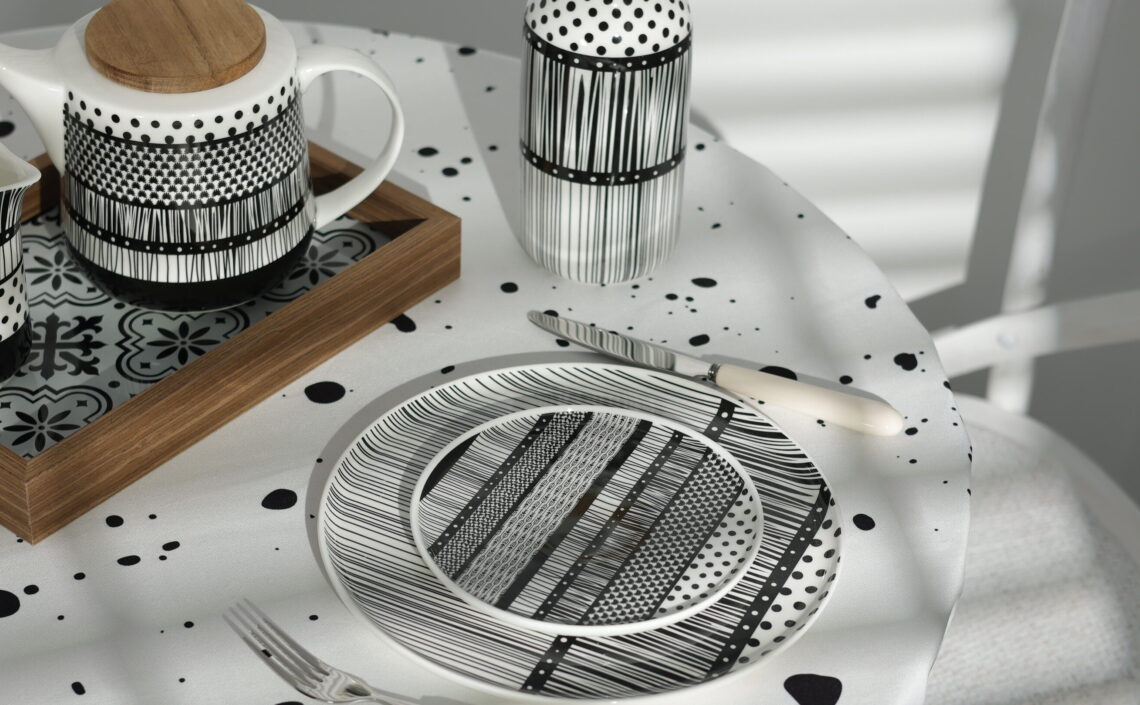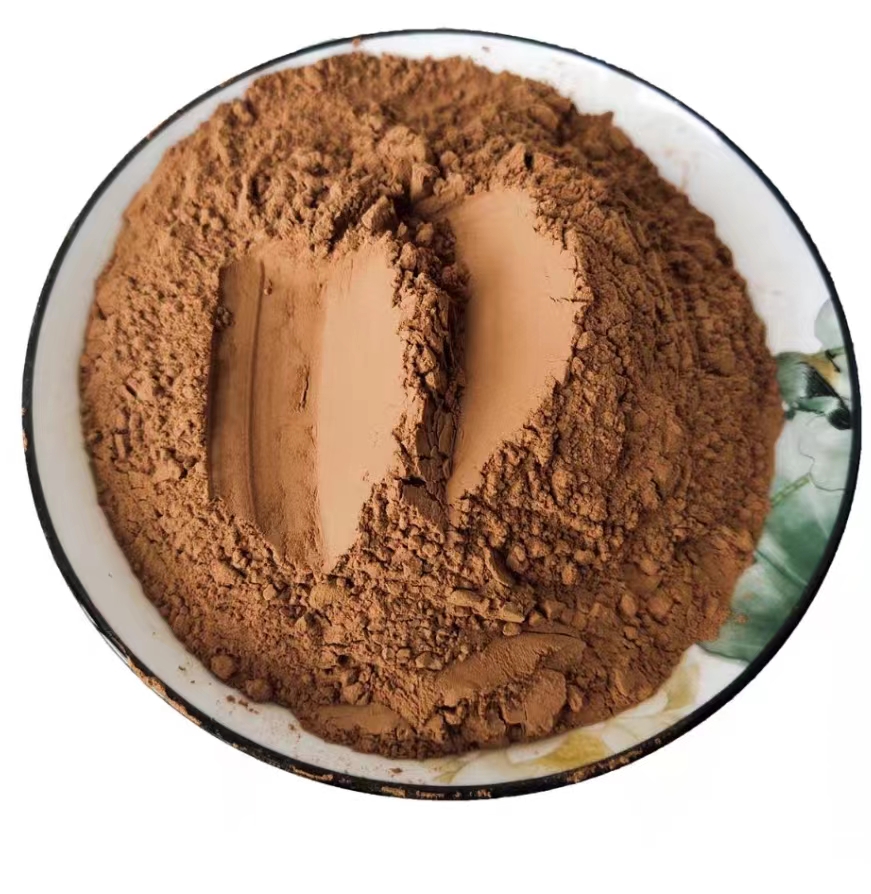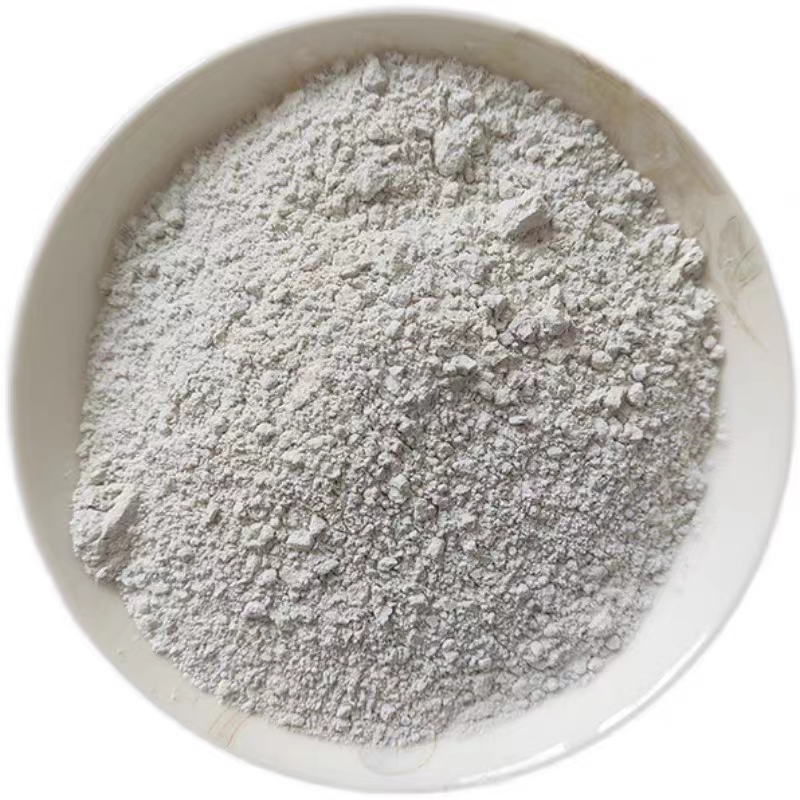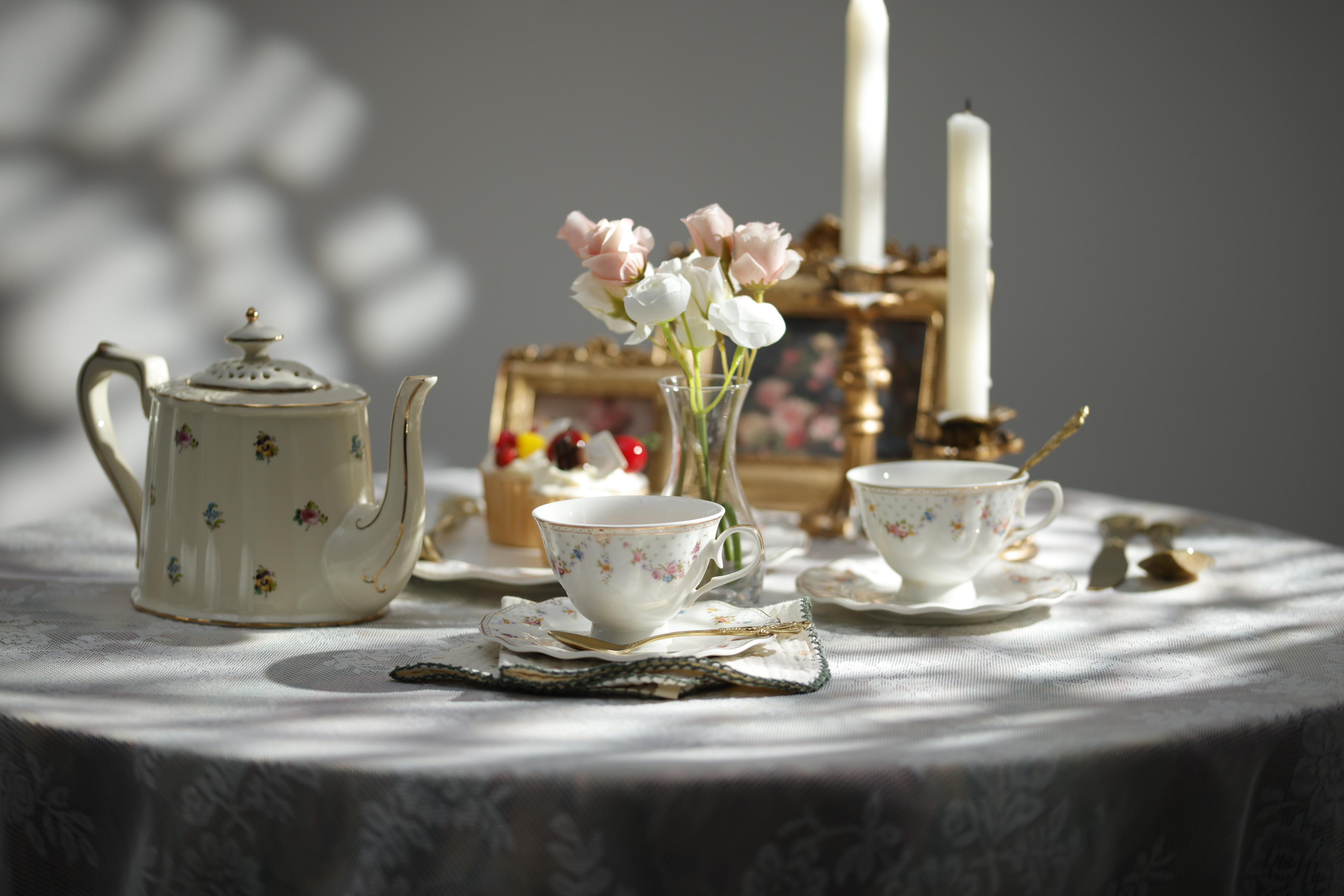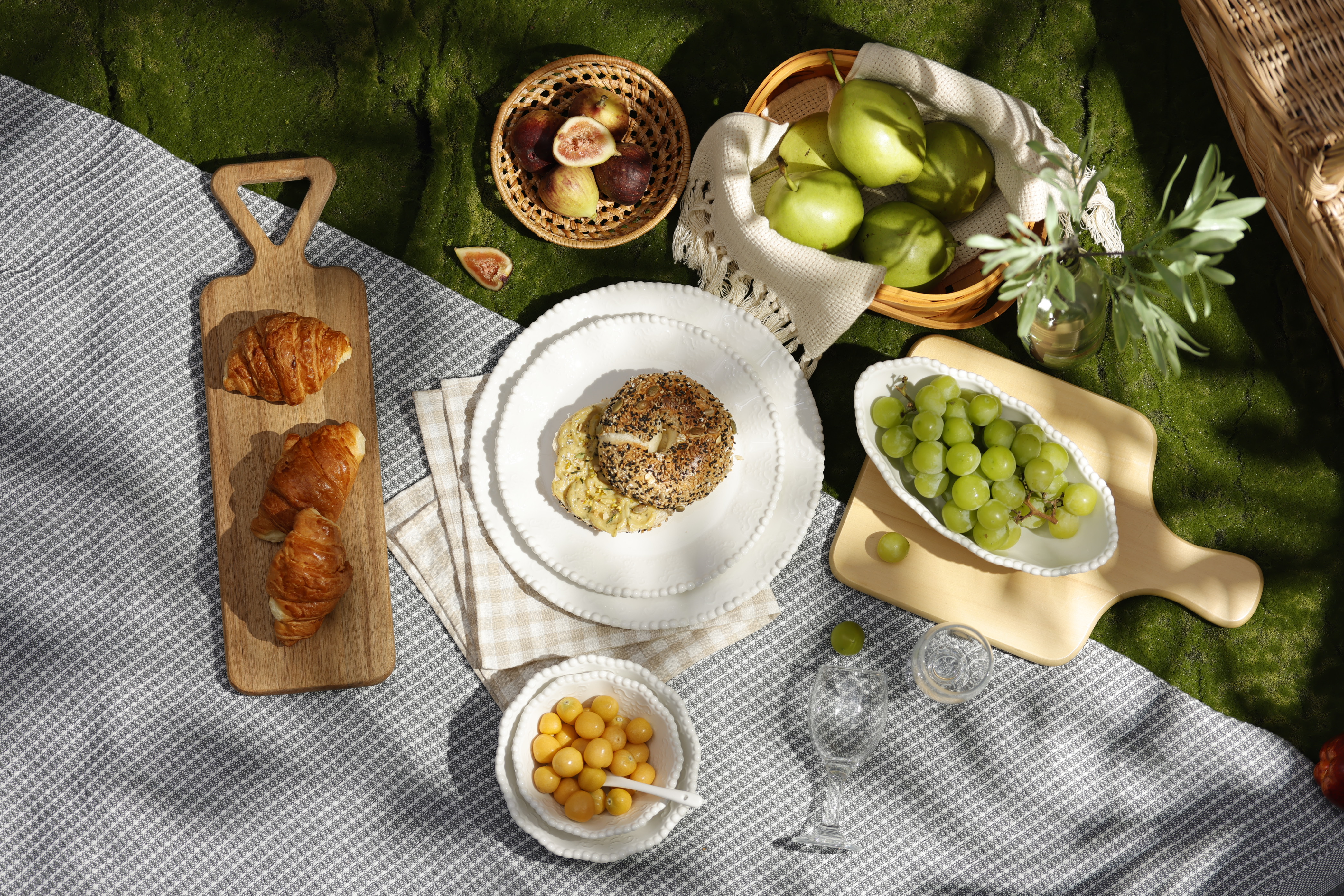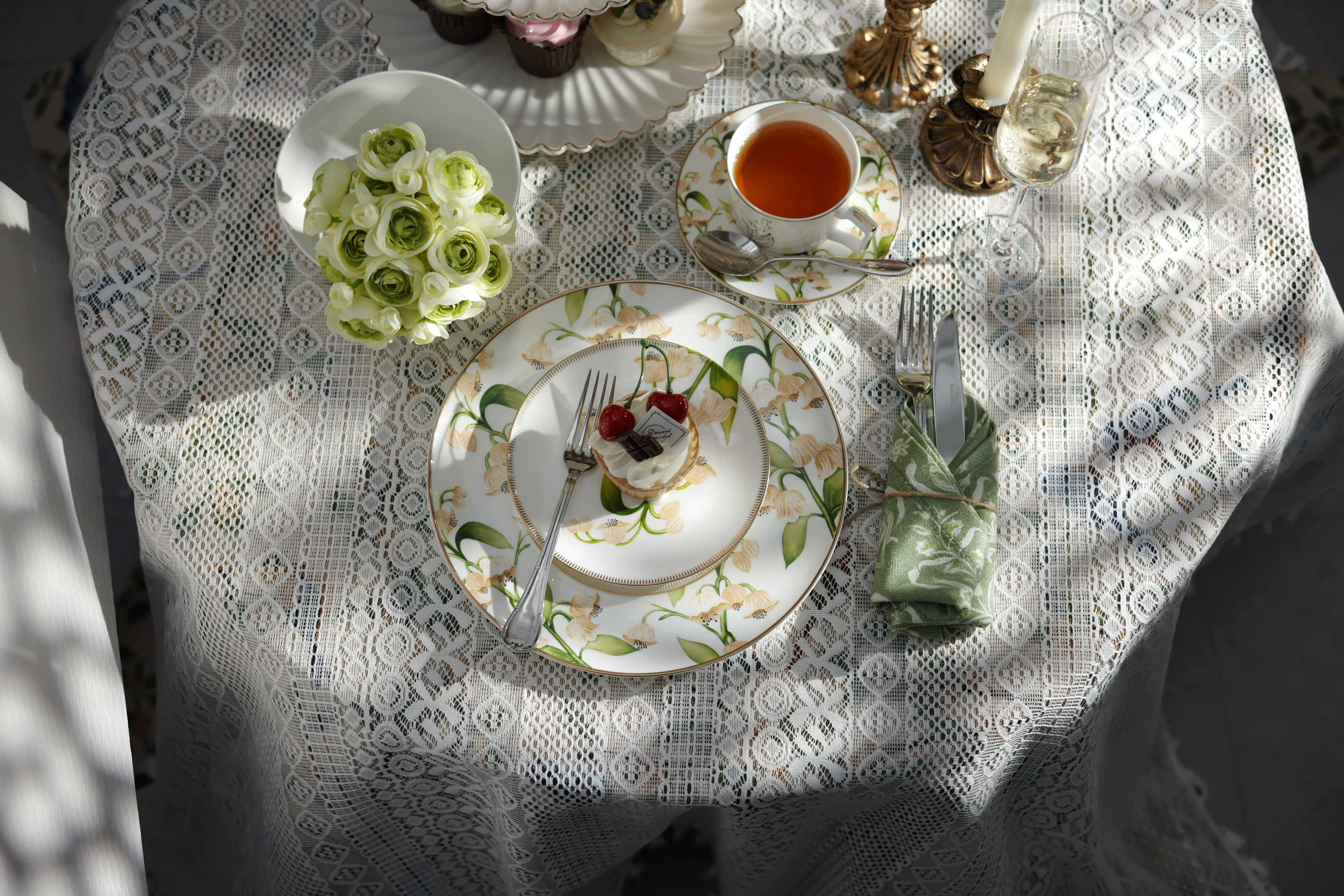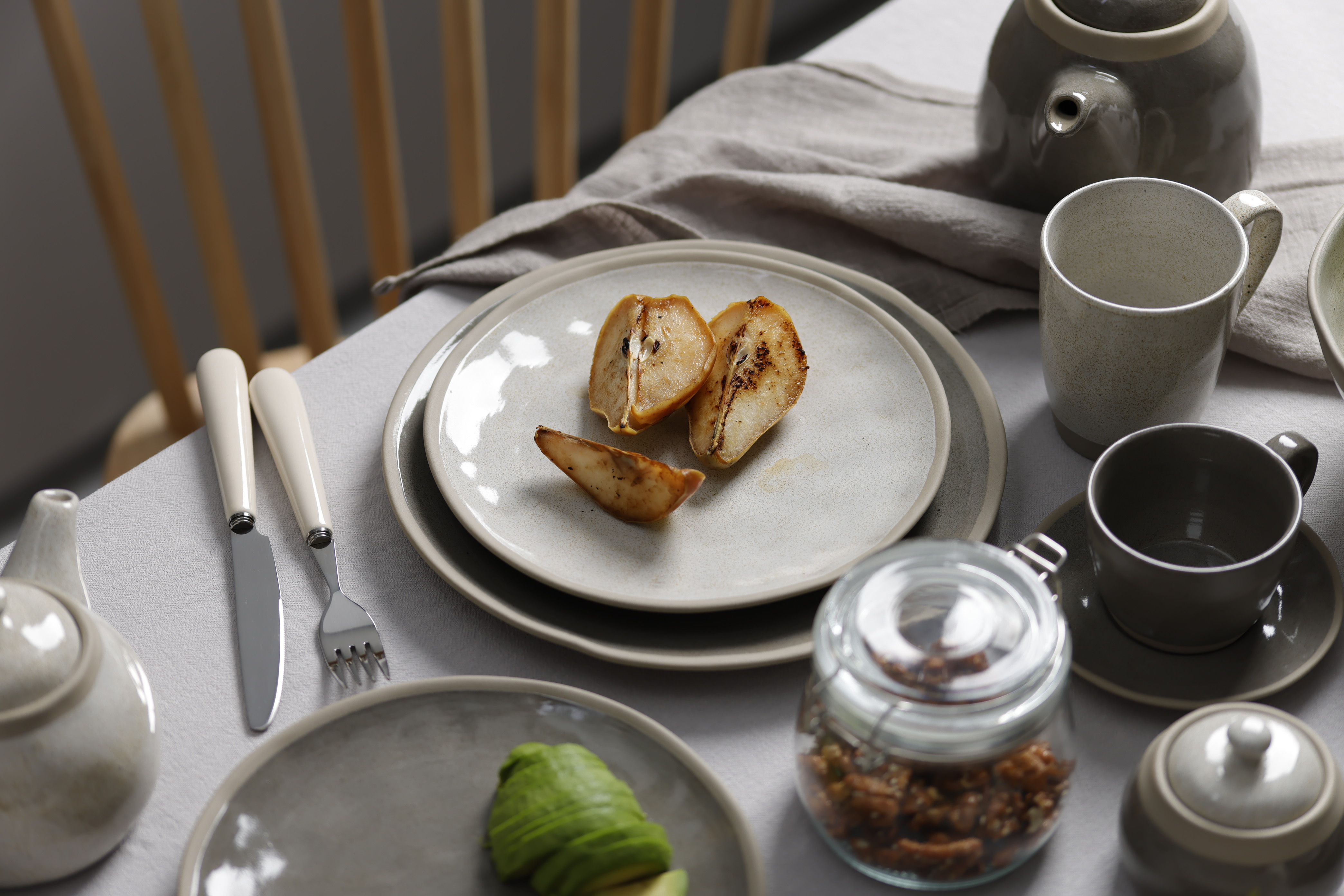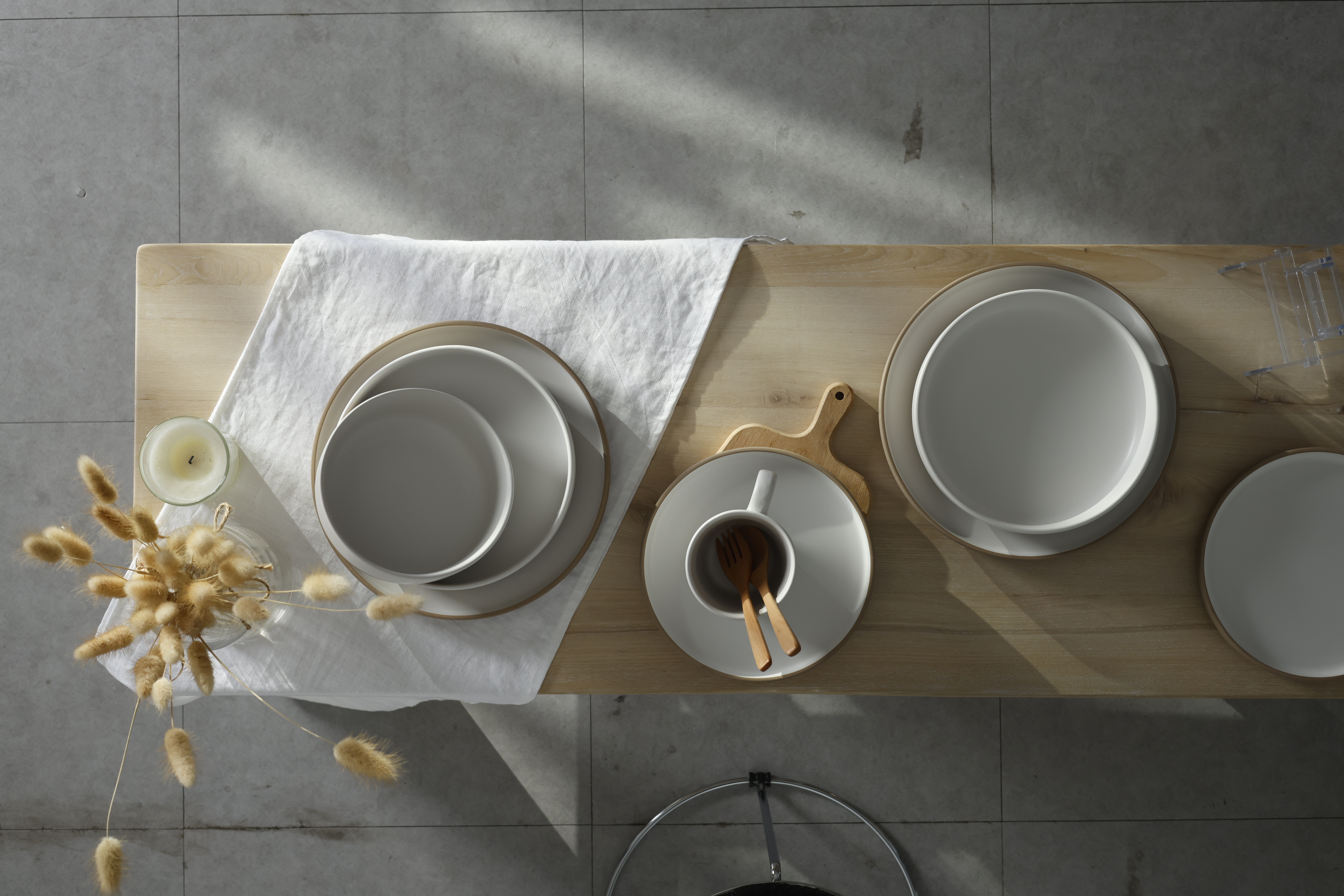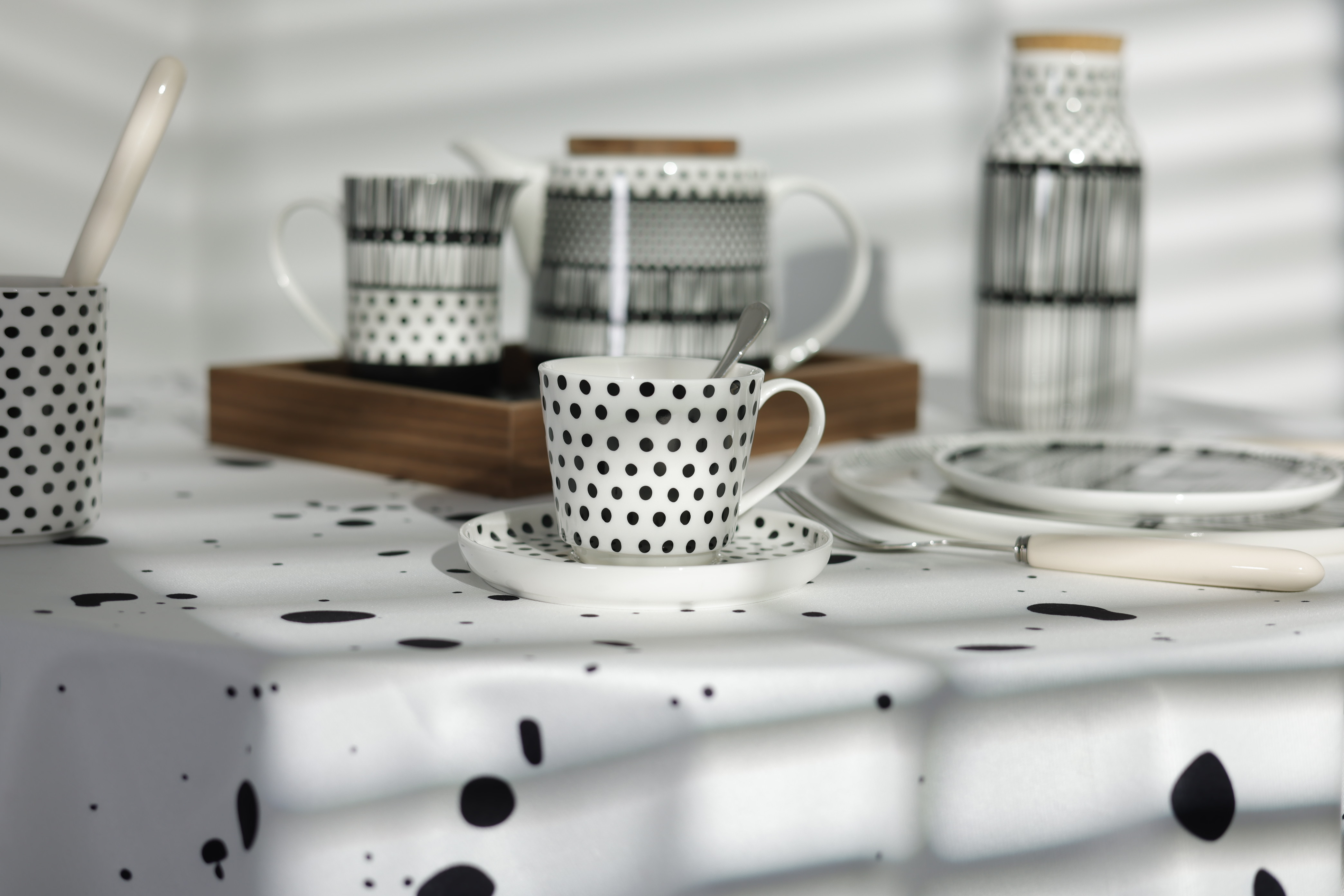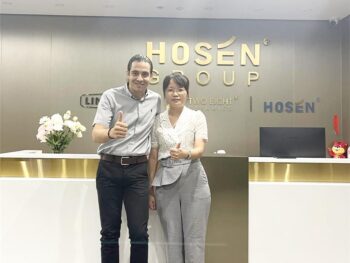How to Differentiate Earthenware and Porcelain Tableware?
2023-11-04
Avis
Introductory
The term “ceramic” is usually used to refer to all objects made of clay that have been hardened by heating. However, Ceramic is a generic term for a variety of clay-based products including “Earthenware” and “Porcelain” (from Wikipedia). Knowing the difference between them will help you judge and evaluate the quality of your ceramic dinnerware, as well as help you properly maintain and care for it. In addition, ceramic tableware and porcelain tableware are also very different in terms of style and use, if you are a ceramic tableware retailer, the correct grasp of the difference between ceramic and porcelain can enable you to better serve your customers and create a selection of hot-selling products.
What is the difference between “Earthenware” and “Porcelain”?
Ceramics is a broad concept that covers both earthenware and porcelain categories. earthenware is mainly made of clay and other raw materials, after low temperature firing, with relatively low hardness and weak durability. Porcelain, on the other hand, is mainly made of raw materials such as kaolin and china stone, and is fired at high temperatures to provide a high degree of hardness and durability.
1. Different row materials
The raw materials used for earthenware and porcelain tableware have some differences in composition and characteristics. The following are their main differences:
Earthenware tableware:
Clay is the main material for earthenware tableware. This natural material is abundant and its main components include silicon, aluminum, oxygen and water, as well as small amounts of other elements and minerals. Clay is generally more granular, and as a result, earthenware has a more granular surface and usually has a natural texture and artistic feel. Due to the large granularity, ceramics generally have the advantage of being lightweight, but also have the disadvantage of being prone to water seepage, so modern processes glaze the earthenware to minimize water seepage.
Porcelain tableware:
The main raw material used in porcelain dinnerware is china clay, also known as kaolin. This clay has a higher purity and finer particle structure, which makes porcelain tableware have better texture and transparency. The quality of the clay directly affects the quality of the porcelain, so only certain places can produce good porcelain. For example,China, renowned for its porcelain production, boasts three regions with abundant high-quality porcelain clay resources, namely Chaozhou in Guangdong Province, Jingdezhen in Jiangxi Province, and Dehua in Fujian Province. These regions have a long history of porcelain production and are known for their exceptional craftsmanship and artistic value, making their porcelain highly esteemed worldwide.
To summarize,earthenware tableware mainly uses coarser-textured clay as raw material, while porcelain tableware uses finer-textured porcelain clay. Porcelain tableware usually has higher texture, transparency and durability due to the high purity and high sintering temperature of the clay. Earthenware, on the other hand, has a more handcrafted and artistic feel and is popular as a decorative piece.
2. Different firing temperatures
Generally speaking, the firing temperature of earthenware tableware is lower than that of porcelain tableware, mainly due to the differences in the raw materials they use and the firing process.
Earthenware tableware:
Earthenware tableware is usually fired at lower temperatures, typically between 800°C and 1,200°C. The exact firing temperature depends on the type of clay used and the firing process. Below are some common firing temperature ranges for earthenware tableware:
Red earthenware: Red earthenware is a type of earthenware with a red or brown surface, and is typically fired at temperatures between 900°C and 1000°C.
White earthenware: White earthenware is a type of earthenware with a white surface and is usually fired at a temperature of about 1,100°C to 1,200°C. It has been used to produce a variety of white earthenware.
Black earthenware: Black earthenware is fired at a lower temperature, usually between 700°C and 1000°C. The lower firing temperature allows the clay to maintain a certain degree of porosity and permeability, while at the same time inducing the reduction of iron oxides to metallic iron in an anaerobic environment, resulting in a black appearance.
Porcelain tableware:
Porcelain dinnerware is usually fired at higher temperatures, typically between 1200°C and 1400°C. The exact firing temperature depends on the type of clay used, the firing process and the design requirements.
Below are the firing temperature ranges for some common porcelain dinnerware:
(1) Ordinary porcelain: Ordinary porcelain refers to general porcelain tableware, which is generally fired at a temperature of about 1200°C to 1300°C. The temperature of the porcelain is about 1,000°C to 1,300°C. This type of porcelain is widely available on people’s tables and in the kitchen, and can meet the requirements of most customers for heat resistance.
For example:
Dinnerware Set: A dinnerware set usually includes matching dinner plates, soup bowls, flatware forks, flatware knives, flatware spoons, etc., as well as possible add-on such as teacups and plates.
Coffee Set: Coffee sets usually include coffee pots, coffee cups, sugar bowls, milk jugs and so on. The design and style of coffee sets may vary according to the region and coffee culture.
Bowl Set: usually includes soup bowls, cutlery bowls, fruit bowls, salad bowls, and so on. The shape, size and depth of the bowl set will vary depending on the use and food.
(2) High-temperature porcelain: High-temperature porcelain, made through a firing process at temperatures typically ranging from 1300°C to 1400°C, refers to a type of porcelain characterized by its high firing temperature.Some need to withstand relatively high temperatures on the vessels can choose high-temperature porcelain, such as porcelain tea sets, porcelain tableware, high-temperature porcelain pots, and so on. Higher temperatures make porcelain more durable and heat-resistant with higher density and hardness. It also changes the color and texture of the porcelain, creating a unique texture and artistic effect. It is highly prized for high quality and fine appearance. Of course, in general, high-temperature porcelain is also relatively expensive.
3.Different glazes
A glaze is a glassy coating applied to the surface of ceramics, porcelain and other products. With this glaze, ceramic tableware possesses a variety of colors and patterns. Not only that, glaze enhances the smoothness and delicate texture of ceramic products, which serves to protect the tableware from contamination and erosion, as well as enhancing their heat resistance and ease of cleaning.
Earthenware tableware:
In order to preserve the natural handcrafted beauty of earthenware tableware or to achieve a special artistic effect, some earthenware is not glazed.. The look and texture of not glazed earthenware can add a decorative touch to the table. However, some are also hung with glaze. When a glaze is applied to the surface of the earthenware and fired at high temperatures, it creates a hard, smooth, and impervious protective layer. The glazed earthenware can take on a variety of different appearances, such as smooth, frosted, glossy, or with special textures. Hanging glaze earthenware glaze in the lower firing temperature will appear to melt. For example, Three-color Tang dynasty pottery (618-907) is a glazed earthenware.
Porcelain dinnerware:
Unlike earthenware, porcelain dinnerware is fully glazed (Except for the feet of the cutlery). If the feet of a porcelain tea set are also fully glazed, we call this type “fully glazed”. The glaze on porcelain dinnerware can vary depending on the production process and design style. Below are some common types of glazes for porcelain dinnerware:
Transparent Glaze: Transparent glazes are one of the most common types of glazes, giving a colorless or slightly transparent appearance. This type of glaze is often used on white or painted porcelain to make the colored patterns more vibrant.
Under-glaze : Under-glaze is a colored glaze applied or painted on the porcelain body before a layer of transparent glaze is applied to the surface. Colored glaze in the high temperature firing process and porcelain body combination, so that the pattern lasting color. Commonly used in traditional Jingdezhen porcelain and blue and white porcelain, etc.
Over-glaze : Over-glaze is a layer of colored glaze applied to porcelain after the transparent glaze firing is completed. Over-glaze is commonly used in decorative porcelain and works of art, such as painting porcelain, enamel and gold color.
Matte Glaze: A matte glaze is a non-shiny glaze that exhibits a texture similar to frosted glass. Frosted glazes add touch and texture to porcelain and are commonly found on porcelain dinnerware in modern styles or minimalist designs.
Enamel Glaze : Enamel glaze is a type of glaze that is achieved by melting colored enamel powder on the surface of the porcelain. Enamel glazes can take on vibrant colors and luster, and are commonly used in decorative porcelain, and enamels.
4.Different porosity
Imagine you’re baking a cake and the high temperatures cause holes to form inside your cake, it’s the same thing with making ceramics. Under high temperature firing, physical and chemical changes occur inside the ceramic, thus forming a certain number of pores. Typically, the fewer the pores, the stronger and more durable the ceramic tableware is, the more waterproof it is, and the better it adapts to temperature.
Earthenware:
Earthenware has a relatively high porosity, usually between 10 and 20 percent. This is due to the fact that earthenware is an artifact made from raw materials such as clay, which is formed after firing. The high organic and mineral content of the clay itself results in a certain amount of porosity being left in the earthenware.
Porcelain:
The porosity of porcelain is below 1% and can often be as low as 0.5% or even lower. Raw materials such as china stone have a low content of impurities and fewer chemical changes during firing, so porcelain has a relatively low porosity.
In general, due to differences in porosity, earthenware is looser and more likely to absorb water and penetrate liquids than porcelain, which is denser and more water-resistant, making it more suitable for items that need to be water-resistant, such as tableware and containers.
Here are some common ranges of porosity in ceramic tableware:
Highly dense ceramics: High-quality ceramic tableware usually has a low porosity, typically below 1%. These ceramic materials are usually made from delicate materials such as kaolin clay, which is finely processed and fired at high temperatures to provide high density and strength.
Medium porosity ceramics: Some common ceramic tableware, such as some traditional coarse ceramics or earthenware, may have porosity ranging from 1% to 5%. These ceramic materials usually have a certain texture and artistry, and the presence of porosity gives them a special appearance and texture.
Low Density Ceramics: Some specialty ceramic tableware, such as coarse ceramics and ceramic artwork, may have porosity greater than 5%. These ceramic materials usually focus on their unique texture, appearance and artistic effect rather than just practicality.

5. Differences in hardness
The hardness of earthenware and porcelain tableware can be assessed by hardness testing. Hardness is the ability of a material to resist scratching or deformation and is usually measured using indicators such as Mohs hardness or Vickers hardness.
Earthenware:
The hardness of earthenware tableware is less than that of porcelain tableware, earthenware firing temperature is low, the billet is not completely sintered, the sound is muffled when openly struck, and the hardness of the body is poor. The hardness of earthenware may be affected by the composition of the material, firing temperature and production process and other factors, so the hardness can vary within a certain range.
Porcelain:
While the firing temperature of porcelain is high, the tire body is basically sintered, the sound is crisp when knocked, and the hardness is also higher. This is determined by the raw materials and production process. As mentioned earlier, the main raw material of earthenware tableware is clay, which is a relatively soft material, while porcelain tableware is composed of kaolin, china stone and other raw materials, which contain low impurities and organic components. After high temperature firing, the impurities in the raw materials will be melted and eliminated, forming a dense porcelain structure.
6.Other differences
There is a clear difference in style between earthenware dinnerware and porcelain dinnerware, mainly in the following areas:
Appearance Design:
Earthenware tableware usually features a rustic and natural theme, focusing on showcasing handmade art and traditional elements. They may feature minimalist decorations or incorporate folk culture patterns and motifs. Porcelain dinnerware, on the other hand, tends to have a refined and elegant look and design, often featuring beautiful paintings, carvings and glazed decorations that present a gorgeous artistic style.
Texture:
Earthenware tableware is made from natural materials such as clay, which is breathable and warm to the touch. This material gives earthenware tableware a primitive, simple texture. Porcelain tableware, on the other hand, is mainly made of white porcelain clay as the main raw material, which is fired at high temperatures and has a smooth and delicate surface, exuding an elegant texture.
Occasions for use:
Due to its rustic and unpretentious nature, earthenware tableware is usually suitable for everyday dining and casual occasions. They are often used in scenarios such as family meals and folk festivals. In contrast, porcelain dinnerware is more suitable for formal occasions and important moments such as banquets, formal dining and special celebrations.
Cultural Context:
Earthenware tableware has a long history and tradition in many cultures, representing a legacy of folk culture and handcrafted arts. They are often associated with local customs and customs. Porcelain tableware, on the other hand, is often associated with aristocratic cultures, royal courts and elite societies, representing elegance and prestige.
In addition to these differences, there is also the fact that ceramics differ in their body and permeability. As a rule, the body of porcelain is usually very hard, but it is also fragile. It is made from clay and other minerals and fired at high temperatures. This gives porcelain an elegant and fine appearance, but it needs to be handled carefully to avoid chipping or breaking. The body of porcelain usually has a dense structure and a smooth surface. This porcelain body allows porcelain to keep liquids and food warm and is easy to clean. The body of certain porcelains will exhibit a translucent or transparent texture. This characteristic is usually associated with the kaolin clay content of the porcelain, which allows light to pass through the porcelain and scatter, creating a unique effect. For comparison purposes, the following is a summary grid comparing earthenware dinnerware and porcelain dinnerware.
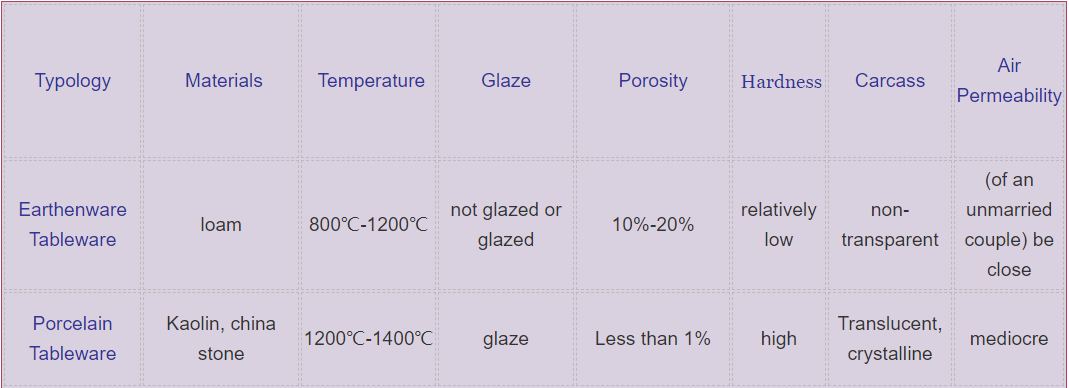
7.Ceramics Tableware Set
Earthenware tableware and porcelain tableware each have their own advantages and disadvantages, so is there a process that can make the best of the shortcomings? The answer is yes. Ceramic tableware commonly used in modern times is often a product of combining earthenware and porcelain. Usually, they use the production process of earthenware, that is, the use of clay and other raw materials, but in the firing process after higher temperatures and longer firing time, so that the structure of the earthenware in the change, closer to the hardness and performance of porcelain. The structure of such earthenware becomes denser after firing at high temperatures, with relatively higher hardness and durability, while still retaining a certain artistic and handcrafted feel to the earthenware.
Therefore, the modern commonly used ceramic tableware can be regarded as a combination of earthenware and porcelain, synthesizing their respective characteristics and properties. This combination retains the natural rusticity and decorative functions of traditional earthenware, while possessing the hardness and durability of porcelain, making a widely used tableware choice in everyday life.
Summary
To summarize, there is a clear difference between earthenware and porcelain tableware in terms of material, appearance, and use. earthenware dinnerware is characterized by its simplicity and rusticity for everyday and casual occasions, while porcelain dinnerware is characterized by its sophistication and elegance for formal occasions and important moments. Whichever type of tableware you choose, they represents culture and art, adding unique character and taste to your table.




